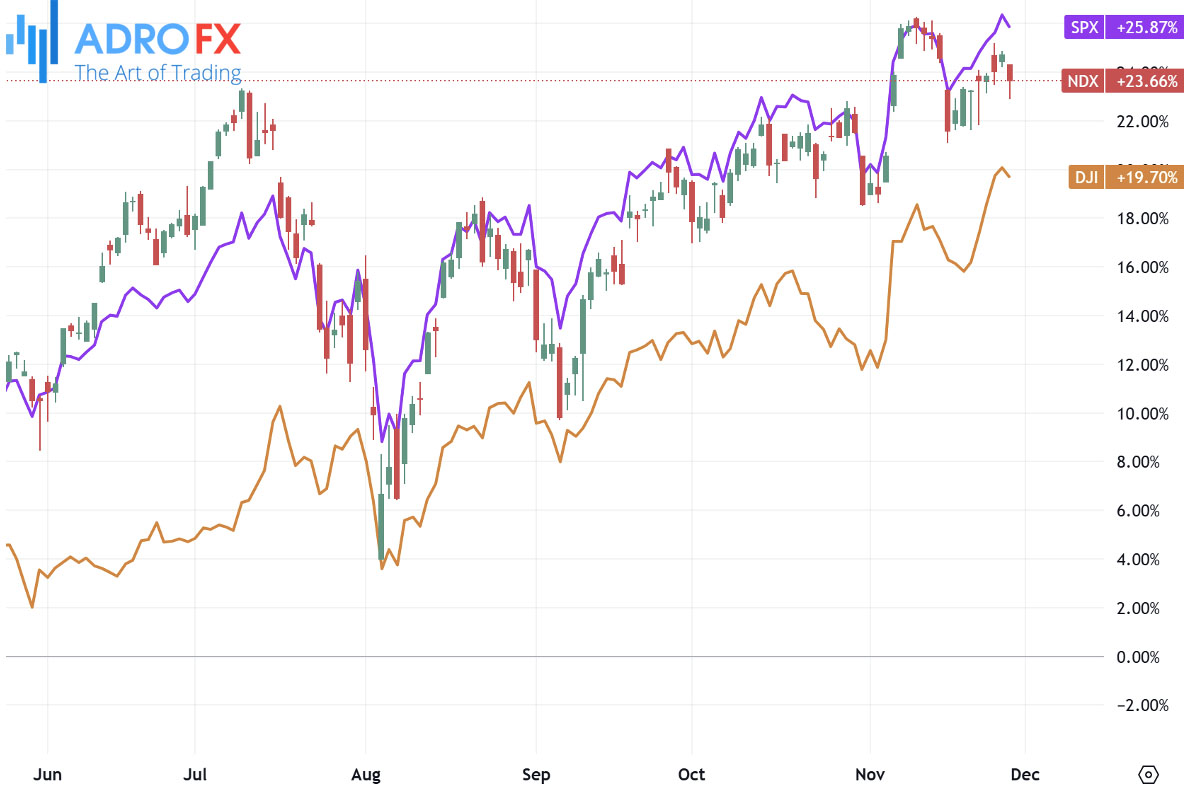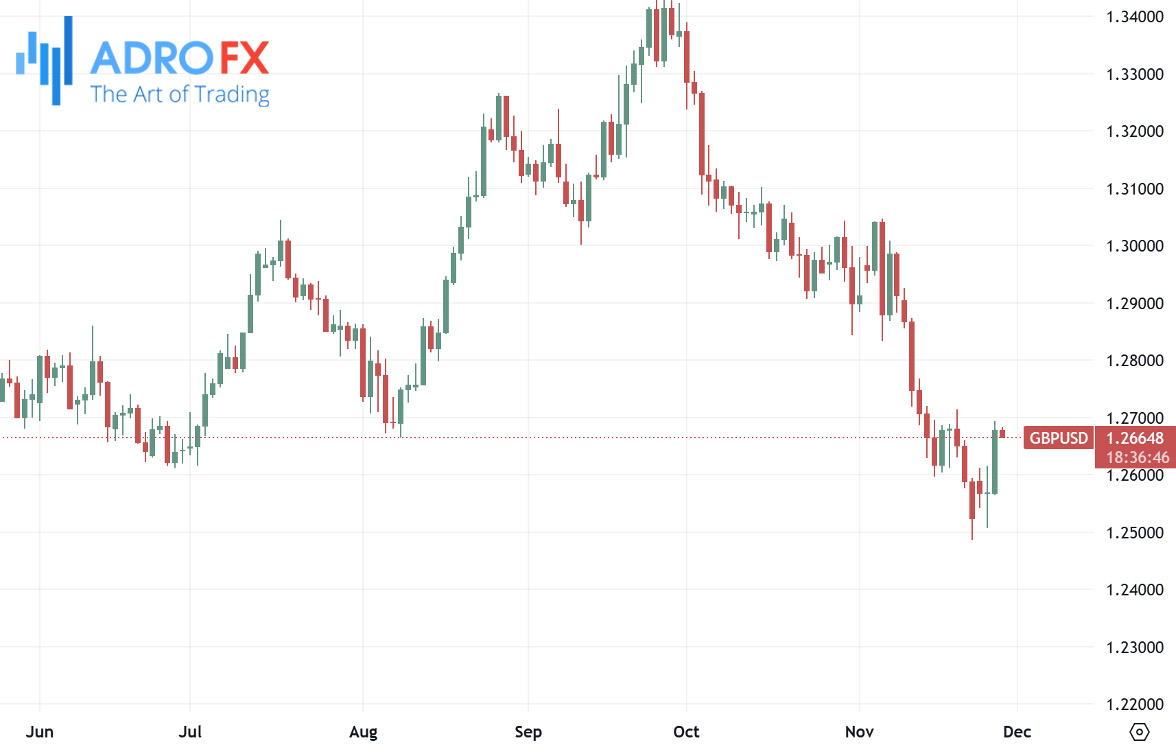Holiday Trading Reflects Caution Amid Economic and Geopolitical Challenges | Daily Market Analysis

Key events:
- USA - Thanksgiving Day
The S&P 500 experienced a modest decline on Wednesday, with cautious trading dominating the day ahead of the Thanksgiving holiday. A mix of economic reports and subdued investor sentiment added weight to the major indices. The Dow Jones Industrial Average fell by 138 points (0.3%), while the S&P 500 slipped 0.4%, and the NASDAQ Composite dropped 0.6%.

The Japanese Yen eased slightly against the US Dollar during Thursday's Asian session, giving up some of its recent gains that pushed it to a five-week high on Wednesday. In the absence of significant new developments, the Yen's pullback remains constrained, with speculation building around a potential Bank of Japan interest rate hike in December.

Japan’s improving Consumer Price Index (CPI) and stable corporate service inflation figures lend credibility to BoJ Governor Kazuo Ueda’s assertion that the nation is progressing towards sustainable, wage-driven inflation. This outlook keeps the possibility of another rate hike alive. At the same time, geopolitical risks and US President-elect Donald Trump’s tariff policies may continue to support the safe-haven appeal of the Yen.
The NZD/USD pair gained momentum around the 0.5900 level during Thursday’s Asian trading hours, driven by a weaker US Dollar. The Greenback softened as month-end flows and profit-taking ahead of the Thanksgiving holiday took hold. While the US markets closed for the day, the Dollar’s downside is likely limited by expectations of a cautious Federal Reserve approach to future rate cuts.

Fresh data from the US showed the Personal Consumption Expenditures (PCE) Price Index rising by 2.3% year-over-year in October, compared to 2.1% in September, as reported by the Bureau of Economic Analysis. The core PCE Price Index climbed to 2.8% from 2.7% in the same period. Both readings aligned with market expectations, suggesting measured inflation progress.
The Reserve Bank of New Zealand reduced its Official Cash Rate (OCR) by 50 basis points to 4.25% in its November meeting. RBNZ Governor Adrian Orr highlighted the potential for an additional 50 bps cut in February 2025, contingent on subdued economic activity. Domestic inflation pressures are expected to ease further, signaling a more accommodative stance ahead.
The Australian Dollar held its ground against the US Dollar following stronger-than-expected private capital expenditure data. New capital expenditure in Australia grew 1.1% quarter-on-quarter in Q3, surpassing forecasts of 0.9% and recovering from a 2.2% contraction in Q2.

However, the AUD/USD pair may face headwinds from geopolitical developments. The US is set to unveil measures on Monday aimed at restricting China’s advancements in artificial intelligence, a move that could ripple through Australian markets due to close trade ties with China. Adding to the pressure, US President-elect Donald Trump’s announcement of a 10% tariff hike on Chinese imports has tempered market sentiment.
Despite these challenges, the Australian Dollar found support from the Reserve Bank of Australia’s optimistic rate outlook. Australia’s monthly CPI remained steady at 2.1% year-over-year in October, marking the lowest level since July 2021 and staying within the RBA’s target range for the third consecutive month.
The GBP/USD pair climbed back above 1.2600 on Wednesday, supported by the broad-market weakness in the US Dollar. With limited UK economic data on the calendar, the Pound’s performance relied heavily on Dollar dynamics.

As US inflation and employment data take center stage in the coming weeks, including next Friday’s nonfarm payrolls report, markets are preparing for further shifts.
As global markets navigate through the end of the week, themes of central bank policies, geopolitical uncertainties, and key economic indicators remain at the forefront. While holiday trading may slow activity in US markets, the coming weeks are likely to bring renewed volatility driven by data releases and policy shifts. Investors are watching closely as speculation builds around rate decisions and international trade developments.








